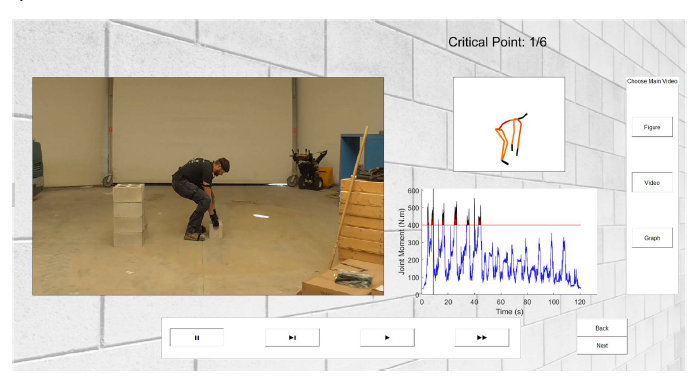Tasha McFarland, Ahmad Mahmassani, JuHyeong Ryu, Bennett Banting, Carl Haasand and Eihab Abdel-Rahman
Tasha McFarland and Ahmad Mahmassani, Department of Systems Design Engineering, University of Waterloo, 200 University Ave W, Waterloo, ON, Canada, tclmcfar@uwaterloo.ca; amahmassani@uwaterloo.ca; eihab@uwaterloo.ca
Carl Haasand and Eihab Abdel-Rahman, Department of Civil and Environmental Engineering, University of Waterloo, 200 University Ave W, Waterloo, ON, Canada, j4ryu@uwaterloo.ca; chaas@uwaterloo.ca
Bennett Banting, Canada Masonry Design Center, 360 Superior Blvd., Mississauga, ON, Canada, Bbanting@canadamasonrycentre.com
ABSTRACT
Construction workers are at risk for musculoskeletal disorders (MSDs) due to the strenuous nature of their jobs, many of which require manual handling of heavy loads. Notably, masonry has one of the highest rates of overexertion and back injuries in construction. For the past several decades, the ‘gold standard’ for kinematic data collection in the field of biomechanics has been optoelectronic motion capture. However, this system has several drawbacks which prohibits its use in the field. Recent advancements in inertial measurement unit (IMU) technology have led to the development of data collection systems comparable to that of the aforementioned ‘gold standard’, thereby enabling the quantification of joint loads and forces on masons in the working environment. Previous research has shown that technique during manual handling tasks, such as lifting, can have a large impact on spinal loads. This paper focuses on further development of an automated risk assessment tool to measure and evaluate whole body motions and joint loads of masons while working on-site. The peak joint loads of expert masons while completing seven different masonry tasks are used to establish an upper limit for joint loads that would minimize muscle injury risk. A novel quantitative scoring system is proposed to make the tool to offer the users a simple interpretation of risk assessment. This tool is the first of its kind to propose an MSD risk scoring system based on realistic measurement of biomechanical loads onsite.
KEYWORDS: biomechanics, ergonomics, musculoskeletal disorders, training



